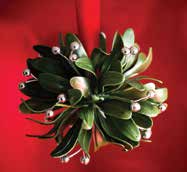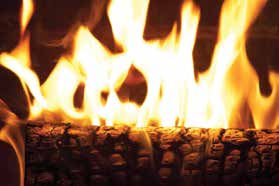Christmas Around the World
by Sandra Lee Buxton
 Just as those of us in Naples prepare to celebrate Christmas with friends, family and our own traditions so are others around the world. Not everyone has a beach but everyone shares the reason for the Season.
Just as those of us in Naples prepare to celebrate Christmas with friends, family and our own traditions so are others around the world. Not everyone has a beach but everyone shares the reason for the Season.
Christmas as we know it today started in Victorian times around the 1860’s. The most celebrated holiday in the world, our modern Christmas has evolved from religious traditions around the globe blending together as the immigrants settled in America.
MERRY CHRISTMAS FROM ENGLAND:
An Englishman, John Horsley, helped popularize our tradition of sending greeting cards around 1850 when he produced a few cards with party scenes and wrote a brief note of cheer to his friends.
Celtic people had long considered mistletoe to have magic power. Celts hung mistletoe in their homes in order to bring good luck and ward off evil spirits. Caroling also began in England with wandering musicians traveling from town to town visiting castles and homes of the rich. In return for their performance, the musicians hoped to receive a hot meal or money.
 CHRISTMAS IN BETHLEHEM:
CHRISTMAS IN BETHLEHEM:
The little town where Jesus was born is the site of the Church of the Nativity, which is colorful with flags and decorations every Christmas.
On Christmas Eve natives and visitors alike crowd the church’s doorways and stand on the roof to watch for the dramatic annual procession.
Galloping horsemen and police mounted on Arabian horses lead the parade. They are followed by a solitary horseman caring a cross and sitting astride a solid black horse. The procession solemnly enters the Church doors, and places an ancient effigy of the Holy Child in the church. Deep winding stairs lead to a grotto where visitors find a silver star marking the site of the Holy Birth of Jesus. Christian homes in Bethlehem are marked by a cross painted over the door and each home displays a homemade manger scene. A star is set up on a pole in the village square.
 CHRISTMAS TRADITION FROM JAMESTOWN VIRGINIA:
CHRISTMAS TRADITION FROM JAMESTOWN VIRGINIA:
According to Captain John Smith’s old documents the first eggnog made in the U.S. was consumed in his 1607 Jamestown settlement. Nog comes from the word grog, which refers to any drink made with rum.
UKRAINE “SROZHDESTVOM KRISTOVYM”:
Ukrainians prepare a traditional twelve course meal. A family’s youngest child watches through the window for the evening star to appear, a signal that the feast can begin.
AUSTRALIA’S SUNNY CHRISTMAS:
During the warm and sunny Australian Christmas season, beach time and outdoor barbecues are common.
Traditional Christmas day celebrations include family gatherings, exchanging gifts and either a hot meal with ham, turkey, pork or seafood on the barbie.
GREECE “KALA CHRISTOUYENNA”:
In Greece, many people believe in “Kallikantzeri,” goblins that appear to cause mischief during the 12 days of Christmas. Gifts are usually exchanged on January 1st, St. Basil’s Day.
 FRANCE “JOYEUX NOËL”:
FRANCE “JOYEUX NOËL”:
In France, Christmas is called Noël. This comes from the French phrase Les Bonnes Nouvelles, which means “the Good News” and refers to the Gospel.
In southern France, some people burn a log in their homes from Christmas Eve until New Year’s Day. This stems from an ancient tradition in which farmers would use part of the log to ensure good luck for the next year’s harvest.
NORWAY “GLEDELIG JUL”:
Norway is the birthplace of the Yule log. The ancient Norse used the Yule log in their celebration of the return of the sun at Winter Solstice.
The popularity of the log, be it wood for a fireplace, log shaped cheese and cakes used during the holiday has significance dating back over a thousand years.
CENTRAL AND SOUTH AMERICA
A manger scene is the primary decoration in most Central and South American countries. St Francis of Assisi created the first living nativity in 1224 to help explain the birth of Jesus to his followers. Christmas is a religious holiday and has traditions inspired mainly from Roman Catholic practices. Food, family, festive decorations with fasting and prayer is the center of family traditions.


Leave a Reply
Want to join the discussion?Feel free to contribute!